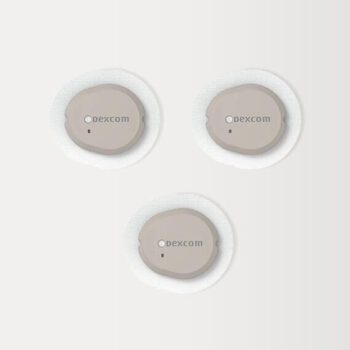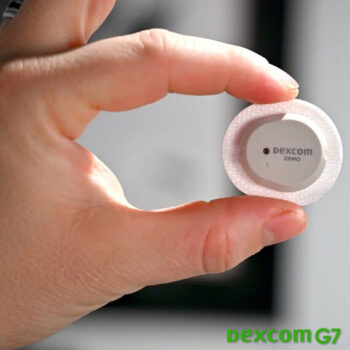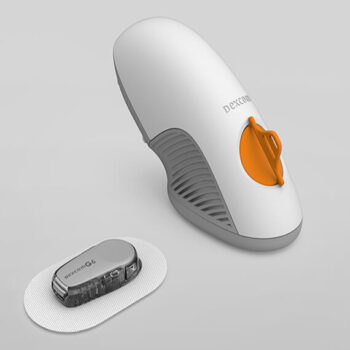Table of content
Introduction
The Dexcom G7 users for continuous glucose monitoring can understand the importance of precise and reliable readings. To deal with the problem of the sensor falling off can be frustrating and troublesome. In this article, we investigate into the common problems related with Dexcom G7 falling off, to discover the fundamental causes, and offer you with top-tier tips for attaining safe wear that lasts.
Common problems with Dexcom G7 falling off
Although the Dexcom G7 sensor comes with remarkable properties. Still, there are certain cons that some users have faced. One of the most common problems faced by people is Dexcom G7 sensor falling off which can lead to Dexcom G7 sensor failure. Following are some common problems related to this issue.
Adhesive quality
In the Dexcom G7 sensor, the adhesive quality plays a fundamental role in its durability on the skin. Inadequate adhesive strength can cause early detachment, rendering the device unproductive. It’s not unusual for users to account for issues of the sensor detaching off shortly after application, particularly during everyday activities.
Sweating and moisture
Moisture, particularly due to sweating, is a common adversary to sensor adhesion. The Dexcom G7 sensor may struggle to maintain its grip on the skin when exposed to excess sweat, especially during workouts or in hot weather. This issue is compounded for individuals with active lifestyles.
Skin sensitivity
skin sensitivity or allergic reactions may also be faced by many people due to the adhesive used in Dexcom G7 sensors. Itching, Redness, and uneasiness can prompt users to get rid of the sensor impulsively, leading to unreliable monitoring and wrong data.
Causes of Dexcom G7 falling off
The Dexcom G7 sensor may fall off due to several reasons. Some of the most common reasons are as follows:
Oily skin
People with naturally oily skin might experience difficulties with sensor adhesion. The extra oil can generate a blockade between the adhesive and the skin, falling its efficiency. This is the reason, the sensor do not adhere properly or falls off soon after its application.
Poor application technique
Proper application of the Dexcom G7 sensor is vital for confirming its durability. Don’t see the proper application method or failing to follow the manufacturer’s procedures can result in inadequate adhesion. Carefully cleaning the area, allowing it to dry fully, and then applying even pressure during attachment can make a significant difference.
Physical activity
For those who are involved in regular physical activities, the friction and movement of the body can compromise the sensor’s adhesion. High-intensity workouts or activities that involve a lot of body movement cause the sensor to peel off impulsively.
Top tips for secure wear of Dexcom G7
If you want your Dexcom G7 sensor to stick to your skin firmly, you can take advantage of the following tips in this regard.
Skin preparation
Appropriate skin preparation is important for confirming the Dexcom G7 sensor adheres efficiently. Clean the application area with slight soap and water, to avoid any oily or lotion-based products that could hamper adhesion. Dry the area gently before sensor attachment.
Choosing the right placement
Selecting the right placement for the sensor is crucial. Choose the areas with less friction and movement, such as the upper arm or lower back. Avoid places where clothing or accessories might rub against the sensor.
Using overlays or tapes
Consider using medical tapes or overlays designed to enhance sensor adhesion. With the help of this products an extra layer of support can be provided, especially during energetic activities or in moist conditions.
Skin-friendly adhesives
Explore skin-friendly adhesive options if you experience sensitivity to the standard adhesive. Many manufacturers offer hypoallergenic adhesive patches that are gentler on the skin while providing reliable adhesion.
You can buy skin Dexcom Adhesive Patches from us as they significantly improve the grip of sensors over your skin and never let them fall off.
Skin barrier products
For users with sensitive skin, applying a skin barrier product before attaching the sensor can create a protective layer. This can help prevent irritation and improve adhesion.
Buy from reliable vendors
If you are facing the Dexcom G7 sensor falling off problem frequently, it may be due to a non-original device. Therefore, always buy from a reliable vendor. You can trust CGM Monitors in this regard as we are a licensed company offering you various CGM devices. You can buy a Dexcom G7 sensor from us at a market-competitive price.
If you are planning to move to another CGM due to fall-off problems, you can buy a Freestyle Libre 3 sensor from us.
Long-Term strategies for better Dexcom G7 Adhesion
Attaining reliable and safe wear of the Dexcom G7 sensor involves a practical approach. In addition to the above-mentioned tips, study these long-term strategies:
Monitor your adhesion: Keep tracking the sensor’s adhesion over time. If you notice a pattern of frequent detachment, explore different techniques and products to improve longevity.
Change application sites: Avoid using the same location for every sensor application. Changing the placement area can stop the overuse of the same skin area. and give time to your skin to recover.
Skincare and Sanitation: Maintaining good skin hygiene is important. Regularly exfoliate the areas where CGM sensors are applied to remove dead skin cells, which can affect adhesion.
Conclusion
Production with Dexcom G7 falling off doesn’t have to be a determined challenge. By understanding the common problems, and underlying causes, and implementing our top-tier tips, you can achieve secure wear and accurate glucose monitoring.
Remember that finding the right combination of techniques may involve some research. By taking a proactive method and staying attuned to your skin’s needs, you can enjoy more consistent and reliable results from the Dexcom G7 sensor.
Frequently Asked Questions
Why does the Dexcom G7 sensor often fall off?
The adhesive quality of the Dexcom G7 sensor is crucial for longevity on the skin. Inadequate adhesive strength can lead to premature detachment, especially during activities. Sweating, skin sensitivity, and poor application technique are also factors contributing to sensor detachment.
How does sweating affect sensor adhesion?
Excess sweat, especially during workouts, can weaken the sensor’s grip on the skin. Moisture interferes with adhesion, causing the Dexcom G7 sensor to peel off. This issue is particularly prevalent for individuals with active lifestyles.
Can skin sensitivity impact sensor adhesion?
Yes, some users experience skin sensitivity or allergic reactions to the sensor’s adhesive. This can cause discomfort, redness, and itching, leading to premature sensor removal and inaccurate data.
What causes the Dexcom G7 sensor to fall off due to oily skin?
Naturally oily skin can create a barrier between the adhesive and the skin, reducing adhesion effectiveness. The excess oil prevents the sensor from adhering properly, causing it to fall off soon after application.
How can I ensure proper application of the Dexcom G7 sensor?
Proper application is vital. Clean the area thoroughly, allow it to dry, and apply even pressure as per the manufacturer’s guidelines. Rushing or improper application can lead to inadequate adhesion.
Why might physical activity impact sensor adhesion?
Engaging in high-intensity workouts or activities with frequent body movement can compromise the sensor’s adhesion. The friction and movement from these activities can cause the sensor to peel off prematurely.













I do agree with all the ideas you have introduced on your post They are very convincing and will definitely work Still the posts are very short for newbies May just you please prolong them a little from subsequent time Thank you for the post
Are the G7 sensors accurate if placed on the thigh?It would be so much easier with trying to place the patch.
Hello Elaine. Dexcom does not recommend wearing G7 sensor even on thighs. Children aged 2 and above can wear it on their upper buttocks. While adults are recommended to wear it on the back of their upper arm. If you are wearing it on your abdomen, make sure to insert the sensor with a 3 inches gap from your belly button. Avoid areas where you have tattoos, scarring, irritation, and bones. Away from waistbands as well.